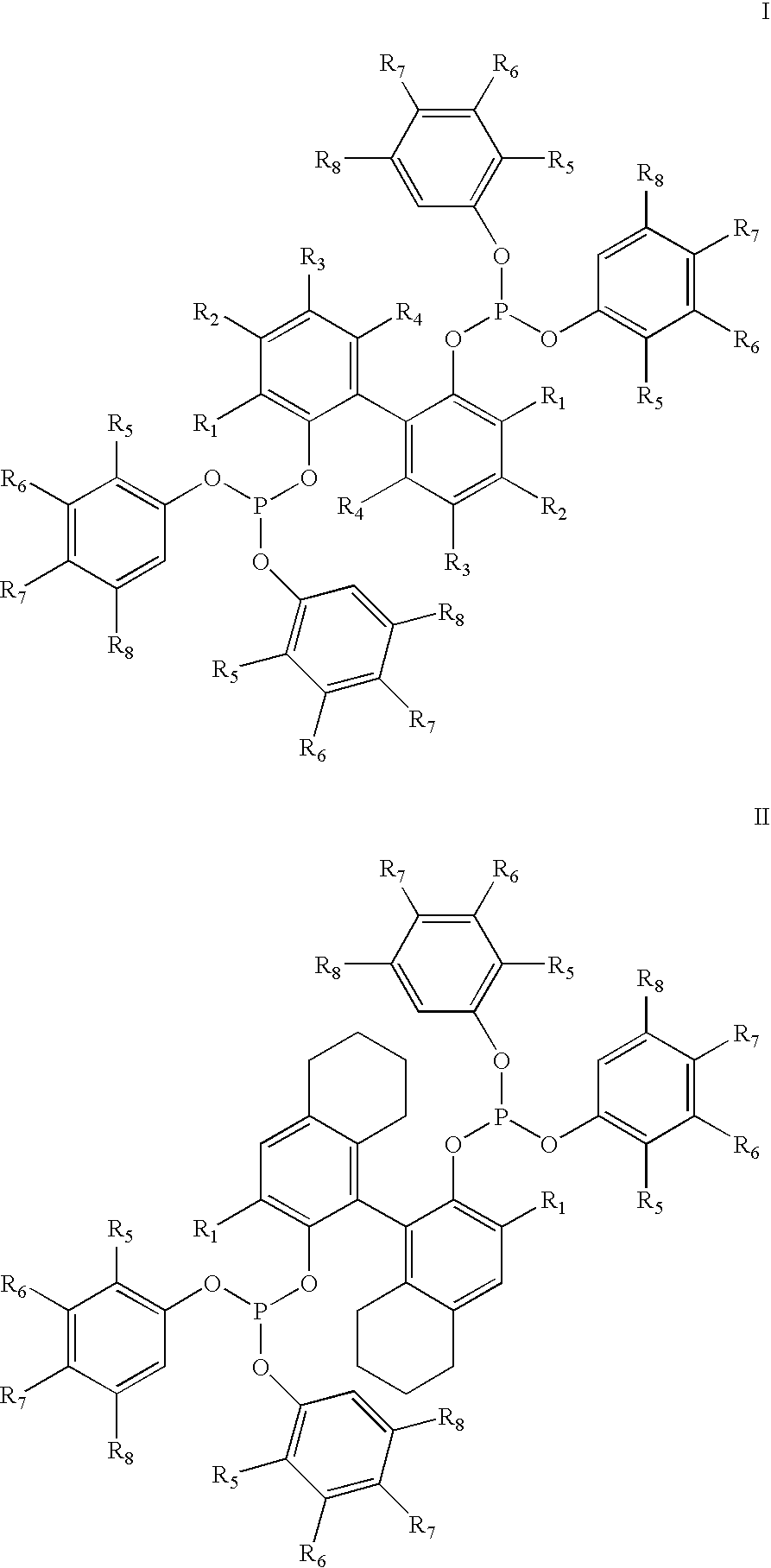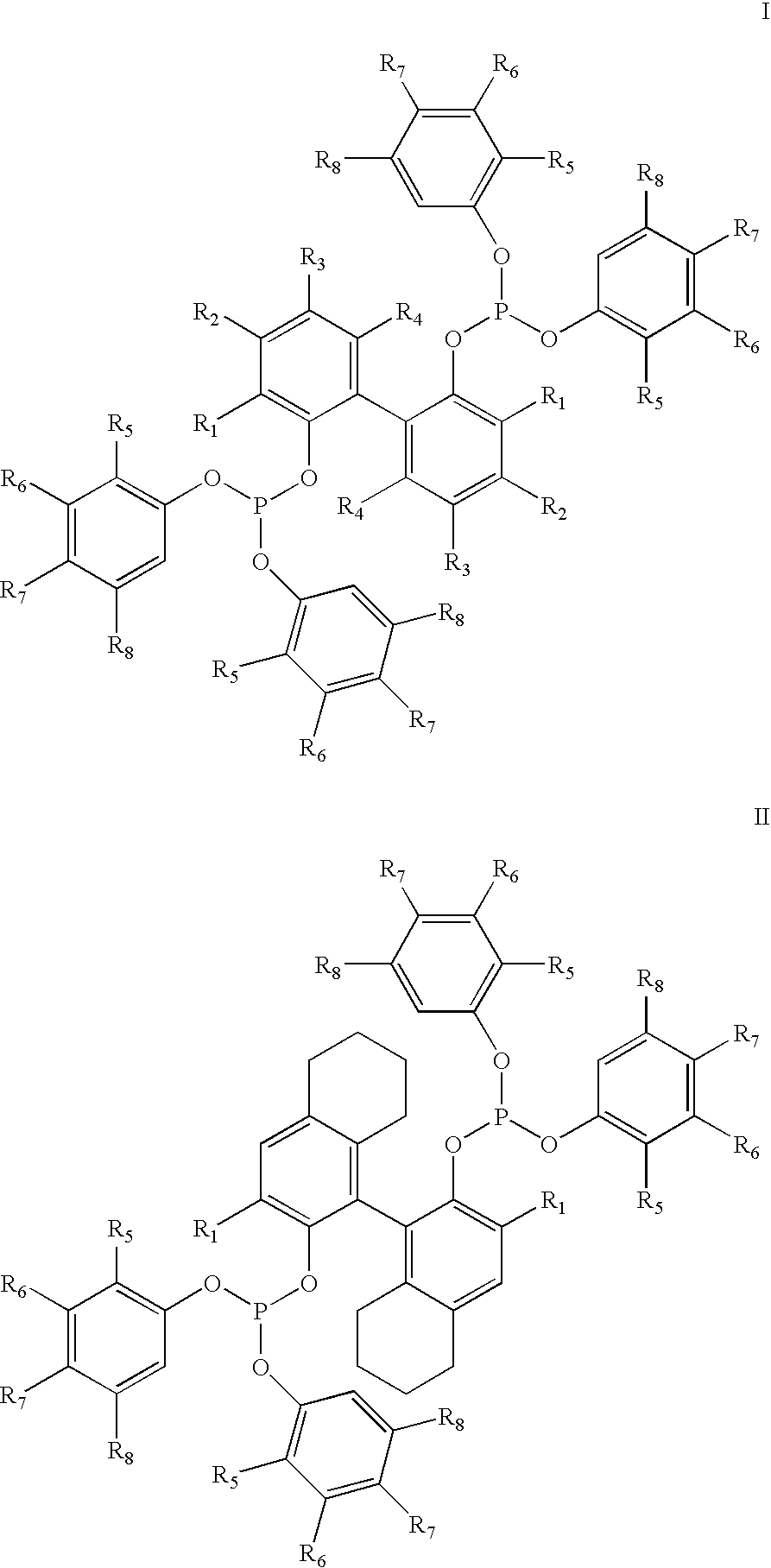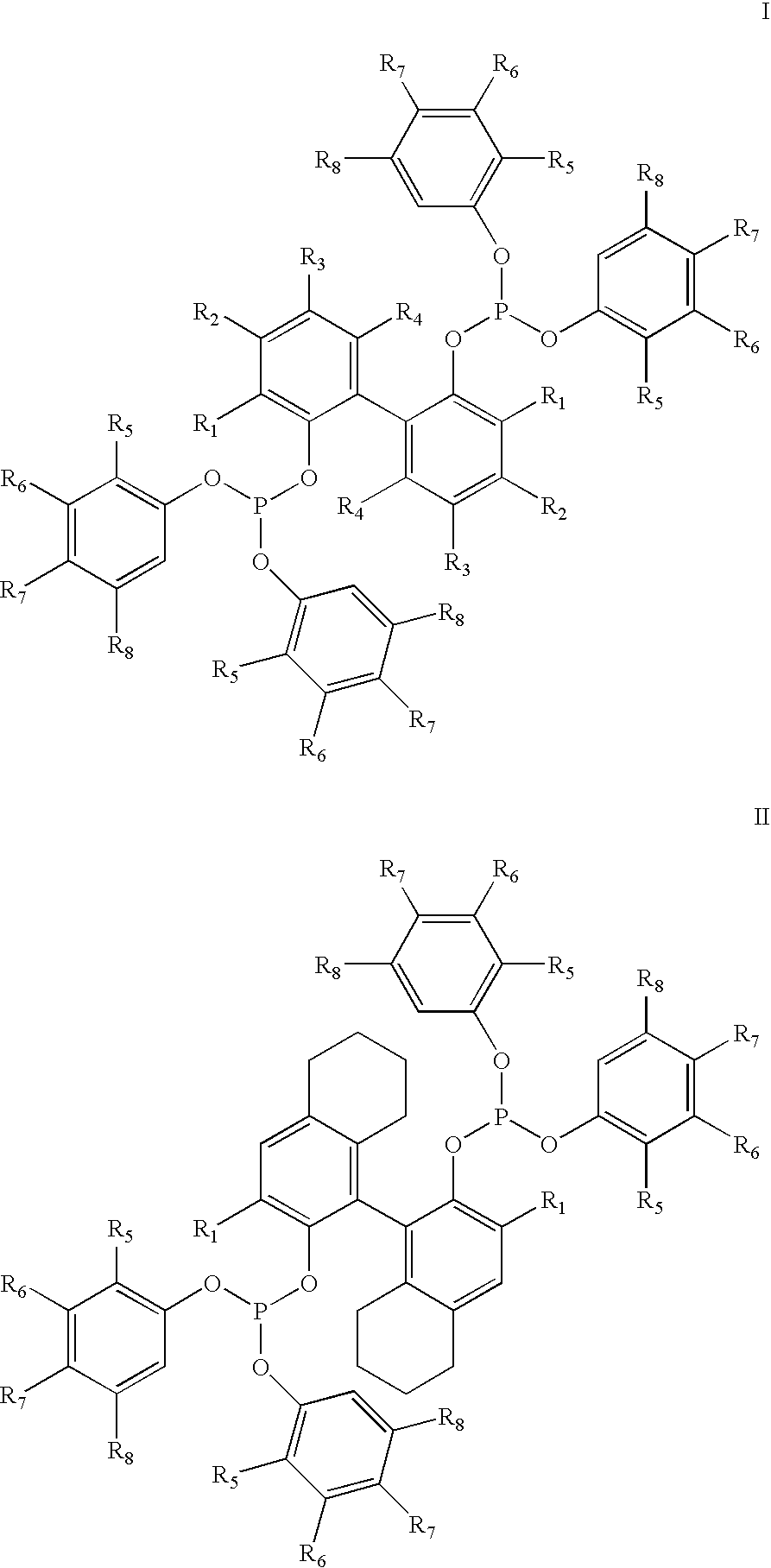Hydrocyanation of 2-pentenenitrile
- Summary
- Abstract
- Description
- Claims
- Application Information
AI Technical Summary
Benefits of technology
Problems solved by technology
Method used
Image
Examples
examples
[0065]The following procedures can be used to treat cis-2PN before its use in hydrocyanation reactions. Cis-2-pentenenitrile (98%) produced from a 1,3-butadiene and 3PN hydrocyanation process may be obtained commercially from the Sigma-Aldrich Chemical Company. Hydroperoxide impurities can be common in such a reagent and are typically detrimental to hydrocyanation catalyst performance. Hydroperoxide impurities can be measured and reduced in cis-2PN, if necessary, by titration, for example with triphenylphosphine, prior to purification by distillation. Distillation under a nitrogen atmosphere can be utilized to remove the majority of oxygen, water, and peroxides and heavy boilers by taking, for example, a forecut and a heartcut during the distillation. The purified cis-2PN of the heartcut can be transferred into a drybox filled with an inert gas such as nitrogen and can be dried further over 3A molecular sieves (which have been previously dried and degassed under nitrogen).
[0066]The ...
examples 48-69
[0068]The following experimental protocol was used for each of the experiments shown in Table II below.
[0069]A Ni(COD)2 (COD=1,5-cyclooctadiene) solution was prepared by dissolving Ni(COD)2 in toluene. A toluene solution of a ligand of Formula I or II was treated with the Ni(COD)2 solution and thoroughly mixed to provide a catalyst precursor solution. A cis-2PN / promoter solution was prepared by dissolving the appropriate promoter in cis-2PN. A sample of catalyst solution was treated with the cis-2PN / promoter solution, and the mixture adjusted to the reaction temperature. During the reaction times listed below, HCN vapor was continuously delivered to the 2PN catalyst solution from a liquid, uninhibited, anhydrous HCN sample at ambient temperature. The specified temperature was maintained during the reaction period. After the reaction was terminated, the mixture was treated with acetonitrile and analyzed by gas chromatography for the amount of adiponitrile (ADN), 2-methylglutaronitril...
PUM
| Property | Measurement | Unit |
|---|---|---|
| temperature | aaaaa | aaaaa |
| reaction temperature | aaaaa | aaaaa |
| reaction temperature | aaaaa | aaaaa |
Abstract
Description
Claims
Application Information
 Login to View More
Login to View More - R&D
- Intellectual Property
- Life Sciences
- Materials
- Tech Scout
- Unparalleled Data Quality
- Higher Quality Content
- 60% Fewer Hallucinations
Browse by: Latest US Patents, China's latest patents, Technical Efficacy Thesaurus, Application Domain, Technology Topic, Popular Technical Reports.
© 2025 PatSnap. All rights reserved.Legal|Privacy policy|Modern Slavery Act Transparency Statement|Sitemap|About US| Contact US: help@patsnap.com



